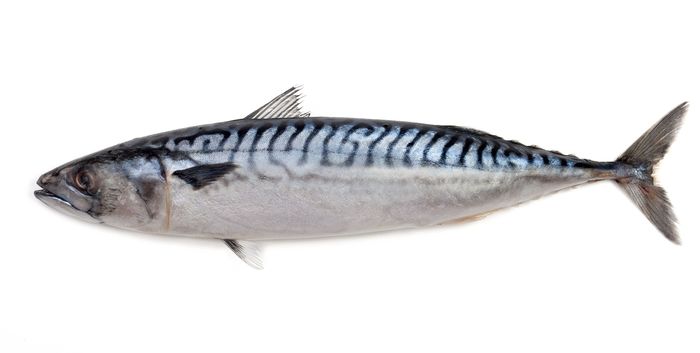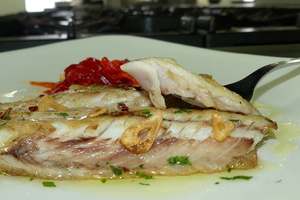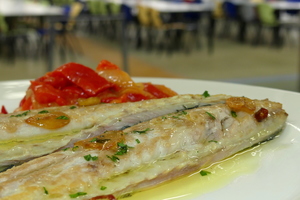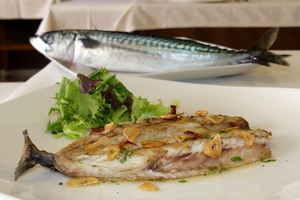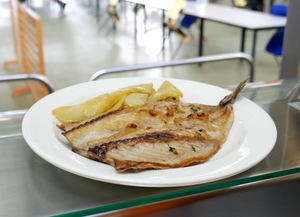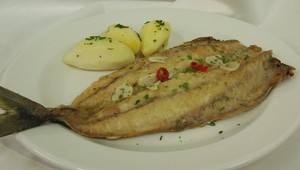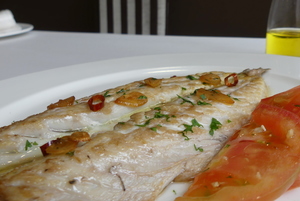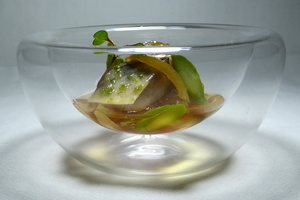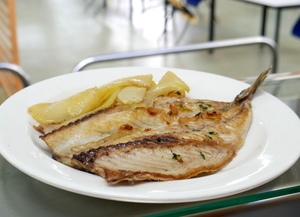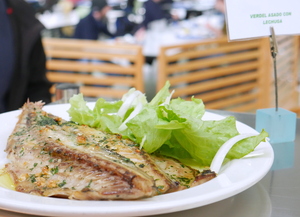Mackerel
Mackerel is the common denomination for any of the 48 species of fish that have a pointy head, a wide body that takes the shape of a spindle after the bilobate tail.
They are 48 species of market importance, both for its fresh and canned consumption. It’s an oily fish that can be used for many different dishes. It’s important in all harbors, in the Cantabrian ones it’s fished with hook and line, with a red string as a lure. It’s also fished with encircling nets. Hook fished mackerels are usually more appreciated and expensive than net fished ones. The fishing season is approximately from January to April or May, with its stronger month being March.
Its side is green with dark stripes and its belly is silver with small scales all over its body. They are 50 cm long maximum and each fish usually weighs around 0,5kg. Behind the dorsal and anal fins it has smaller ones named finlets. They usually live in big schools near the surface and they feed on small fishes and crustaceans. The breeding season is at the end of spring and start of summer, the eggs float on the water surface.
The Atlantic mackerel is very similar and sometimes they are mistaken. They have the same shape and characteristics; it’s a bit darker with the black stripes a bit more regularly placed.
The mackerel distribution spreads all over the Atlantic, Cantabrian, Mediterranean and Black sea.
-
Type of dish
- Beers
- Cocktails
- Breakfasts and brunch
- Burguers
- Juices, milkshakes and beverages
- Shellfish
- Bread and pastries
- Pizzas, patty
- Dessert
- Pasta
- Sándwich
- Pastries
- Finger foods
- Ice creams and sorbets
- Legumes
- Salads
- Eggs
- Patty
- liqueur
- Harvard plate
- Main course
- Meats
- Fish
- Birds
- Vegetables
- Soups and creams
- Rices
- Coffee, chocolate and infusion
- Cheeses
- Appetizers and canapes
- Temperature
- Cuisine type
- Additional culinary preparation
- Conservation technique
- Seasonal recipes
-
- Aromatic herbs
- Beverages
- Big game hunt
- Bread and pastries
- Canned goods and pickles
- Cereals
- Condiments, spices and additives
- Cooked, salted, preserved and cold meats
- Dried fruits and nuts
- Dry pulses
- Edible oils and vinegars
- Eggs and derivatives
- Feathered game hunt
- Fish cuts
- Fishes
- Insects
- Kitchen and bakery tecniques
- Kitchen and bakery utensils
- Meat cuts
- Meats
- Milk, cream and derivatives
- Mushrooms
- Offal
- Pasta, rice, flour and derivatives
- Poultry
- Seafood
- Service techniques
- Service utensils
- Vegetables cuts
- Vegetables, fruits, tubers and seaweed

